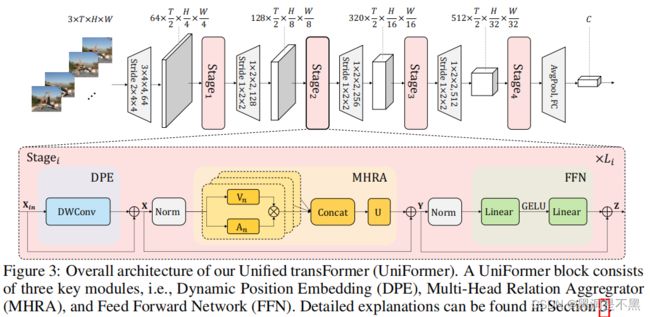- 天文图像处理:星系分类与天体定位
xcLeigh
计算机视觉CV图像处理分类人工智能AI计算机视觉
天文图像处理:星系分类与天体定位一、前言二、天文图像处理基础2.1天文图像的获取2.2天文图像的格式2.3天文图像处理的基本流程三、天文图像预处理3.1去噪处理3.2平场校正3.3偏置校正四、星系分类4.1星系的分类体系4.2基于特征提取的星系分类方法4.3基于深度学习的星系分类方法五、天体定位5.1天体坐标系统5.2基于星图匹配的天体定位方法5.3基于深度学习的天体定位方法六、总结与展望致读者一
- 深度学习——CNN(3)
飘涯
前言:前面介绍了最基本的Lenet,下面介绍几种其他的网络结构CNN-AlexNet网络结构如下图:从图中可以看出,采用双gpu训练增加LRN归一化层:本质上,这个层也是为了防止激活函数的饱和的。采用dropout防止过拟合基于AlexNet进行微调,诞生了ZF-netCNN-GoogleNetGoogLeNet借鉴了NIN的特性,在原先的卷积过程中附加了11的卷积核加上ReLU激活。这不仅仅提升
- AI 人工智能与 Copilot 的融合发展策略
AI天才研究院
AI人工智能与大数据人工智能copilotai
AI人工智能与Copilot的融合发展策略关键词:人工智能、Copilot、代码生成、人机协作、机器学习、自然语言处理、软件开发摘要:本文探讨了人工智能与Copilot技术的融合发展策略。我们将从技术原理、实现方法、应用场景等多个维度深入分析,提出一套完整的融合框架和发展路径。文章首先介绍背景和核心概念,然后详细讲解关键技术,包括自然语言处理、代码生成算法等,接着通过实际案例展示应用效果,最后讨论
- AI 人工智能与 Copilot 碰撞出的火花
AI天才研究院
AI大模型企业级应用开发实战人工智能copilotai
AI人工智能与Copilot碰撞出的火花关键词:AI人工智能、Copilot、代码辅助、智能编程、人机协作、软件开发、技术创新摘要:本文深入探讨了AI人工智能与Copilot碰撞所产生的一系列效应。首先介绍了相关背景,包括目的、预期读者、文档结构和术语表。接着阐述了核心概念与联系,展示了其原理和架构的示意图及流程图。详细讲解了核心算法原理和具体操作步骤,并通过Python代码进行说明。同时给出了数
- 黄仁勋对话Transformer七子:模型的未来在于数据质量,而非规模
强化学习曾小健
#AI商业/产品/投融资前沿#LLM大语言模型transformer深度学习人工智能
黄仁勋对话Transformer七子:模型的未来在于数据质量,而非规模乌鸦智能说2024-03-2216:14在今年的GTC大会上,英伟达CEO黄仁勋邀请了Transformer的七位作者(NikiParmar因故临时未能出席)参与圆桌论坛的讨论,这是Transformer团队首次在公开场合集体亮相。2017年,八位在谷歌工作的AI科学家发表了一篇名为《AttentionIsAllYouNeed》
- 微算法科技技术突破:用于前馈神经网络的量子算法技术助力神经网络变革
MicroTech2025
量子计算算法神经网络
随着量子计算和机器学习的迅猛发展,企业界正逐步迈向融合这两大领域的新时代。在这一背景下,微算法科技(NASDAQ:MLGO)成功研发出一套用于前馈神经网络的量子算法,突破了传统神经网络在训练和评估中的性能瓶颈。这一创新性的量子算法以经典的前馈和反向传播算法为基础,借助量子计算的强大算力,极大提升了网络训练和评估效率,并带来了对过拟合的天然抗性。前馈神经网络是深度学习的核心架构,广泛应用于图像分类、
- 微算法科技研究量子视觉计算,利用量子力学原理提升传统计算机视觉任务的性能
计算机视觉,作为人工智能领域的一个重要分支,致力于模拟人类视觉系统对图像或视频等视觉数据的理解与分析能力。它涵盖了图像识别、目标检测、图像分割等一系列复杂任务,广泛应用于自动驾驶、医疗影像分析、安防监控等多个领域。然而,随着数据规模的不断膨胀和任务复杂度的日益提升,传统计算机视觉算法在处理大规模、高维度数据时遇到了性能瓶颈。微算法科技(NASDAQ:MLGO)研究量子视觉计算,探索量子计算与经典卷
- vLLM快速入门:开启高效推理与部署之旅
在如今这个人工智能飞速发展的时代,语言模型的应用已经深入到我们生活的方方面面,从智能聊天机器人到文本生成工具,都离不开强大的语言模型技术支持。而vLLM作为一个专注于高效推理和部署的开源项目,正在为研究人员和开发人员提供一种全新的解决方案,让语言模型的使用变得更加便捷、高效。初识vLLM:背景与意义vLLM(VeryLargeLanguageModelInference)是一个专注于大型语言模型推
- 深入解析 vLLM 分布式推理与部署策略
在当今人工智能快速发展的时代,大型语言模型(LLM)的推理和部署面临着诸多挑战,尤其是当模型规模日益庞大时,如何高效地利用硬件资源成为关键问题。vLLM作为一种强大的工具,为分布式推理和部署提供了多种策略,本文将详细探讨其相关技术和应用场景,希望能对您提供有价值的参考。分布式推理策略的选择在开始分布式推理和部署之前,明确何时采用分布式推理以及可选的策略至关重要。1.单GPU推理:如果模型能够在单个
- 英伟达Triton 推理服务详解
leo0308
基础知识机器人Triton人工智能
1.TritonInferenceServer简介TritonInferenceServer(简称Triton,原名NVIDIATensorRTInferenceServer)是英伟达推出的一个开源、高性能的推理服务器,专为AI模型的部署和推理服务而设计。它支持多种深度学习框架和硬件平台,能够帮助开发者和企业高效地将AI模型部署到生产环境中。Triton主要用于模型推理服务化,即将训练好的模型通过
- Java NLP炼金术:从词袋到深度学习,构建AI时代的语言魔方
墨夶
Java学习资料人工智能java自然语言处理
一、JavaNLP的“三剑客”:框架与工具链1.1ApacheOpenNLP:传统NLP的“瑞士军刀”目标:用词袋模型实现文本分类与实体识别代码实战:文档分类器的“炼成术”//OpenNLP文档分类器(基于词袋模型)importopennlp.tools.doccat.*;importopennlp.tools.util.*;publicclassDocumentClassifier{//训练模型
- PyTorch & TensorFlow速成复习:从基础语法到模型部署实战(附FPGA移植衔接)
阿牛的药铺
算法移植部署pytorchtensorflowfpga开发
PyTorch&TensorFlow速成复习:从基础语法到模型部署实战(附FPGA移植衔接)引言:为什么算法移植工程师必须掌握框架基础?针对光学类产品算法FPGA移植岗位需求(如可见光/红外图像处理),深度学习框架是算法落地的"桥梁"——既要用PyTorch/TensorFlow验证算法可行性,又要将训练好的模型(如CNN、目标检测)转换为FPGA可部署的格式(ONNX、TFLite)。本文采用"
- 算法学习笔记:17.蒙特卡洛算法 ——从原理到实战,涵盖 LeetCode 与考研 408 例题
在计算机科学和数学领域,蒙特卡洛算法(MonteCarloAlgorithm)以其独特的随机抽样思想,成为解决复杂问题的有力工具。从圆周率的计算到金融风险评估,从物理模拟到人工智能,蒙特卡洛算法都发挥着不可替代的作用。本文将深入剖析蒙特卡洛算法的思想、解题思路,结合实际应用场景与Java代码实现,并融入考研408的相关考点,穿插图片辅助理解,帮助你全面掌握这一重要算法。蒙特卡洛算法的基本概念蒙特卡
- AI音乐模拟器:AIGC时代的智能音乐创作革命
lauo
人工智能AIGC开源前端机器人
AI音乐模拟器:AIGC时代的智能音乐创作革命引言:AIGC浪潮下的音乐创作新范式在数字化转型的浪潮中,人工智能生成内容(AIGC)正在重塑各个创意领域。音乐产业作为创意经济的重要组成部分,正经历着前所未有的变革。据最新市场研究数据显示,全球AI音乐市场规模预计将从2023年的5.8亿美元增长到2030年的26.8亿美元,年复合增长率高达24.3%。这一快速增长的市场背后,是AI音乐技术正在打破传
- LLM中 最后一个词语的表征(隐藏状态)通常会融合前面所有词语的信息吗?
ZhangJiQun&MXP
教学2024大模型以及算力2021AIpython机器学习算法深度学习人工智能
LLM中最后一个词语的表征(隐藏状态)通常会融合前面所有词语的信息吗?在大语言模型(LLM)中,最后一个词语的表征(隐藏状态)通常会融合前面所有词语的信息,这是由LLM的核心架构(以Transformer为基础)决定的,具体可以从以下角度理解:1.核心机制:自注意力(Self-Attention)的作用现代LLM(如GPT系列、Qwen等)均基于Transformer架构,其核心是自注意力机制。在
- 深度学习模型表征提取全解析
ZhangJiQun&MXP
教学2024大模型以及算力2021AIpython深度学习人工智能pythonembedding语言模型
模型内部进行表征提取的方法在自然语言处理(NLP)中,“表征(Representation)”指将文本(词、短语、句子、文档等)转化为计算机可理解的数值形式(如向量、矩阵),核心目标是捕捉语言的语义、语法、上下文依赖等信息。自然语言表征技术可按“静态/动态”“有无上下文”“是否融入知识”等维度划分一、传统静态表征(无上下文,词级为主)这类方法为每个词分配固定向量,不考虑其在具体语境中的含义(无法解
- LLM的表征做减法的是什么,自然语言是一个矩阵,怎么进行减法的
ZhangJiQun&MXP
教学2024大模型以及算力2021AIpython计算机视觉人工智能机器学习算法深度学习
LLM的表征做减法的是什么,自然语言是一个矩阵,怎么进行减法的有个假设:就是最后一个词语融合了前面词语的信息减法操作主要用于提取模型内部表征中的"诚实性"概念向量。具体来说,这是通过对比诚实和不诚实场景下的模型隐藏状态实现的。importtorchfromtransformersimportAutoModelForCausalLM,AutoTokenizer,AutoConfigimportnum
- 视频分析:让AI看懂动态画面
随机森林404
计算机视觉音视频人工智能microsoft
引言:动态视觉理解的革命在数字信息爆炸的时代,视频已成为最主要的媒介形式。据统计,每分钟有超过500小时的视频内容被上传到YouTube平台,而全球互联网流量的82%来自视频数据传输。面对如此海量的视频内容,传统的人工处理方式已无法满足需求,这正是人工智能视频分析技术大显身手的舞台。视频分析技术赋予机器"看懂"动态画面的能力,使其能够自动理解、解释甚至预测视频中的内容,这一突破正在彻底改变我们与视
- 【Qualcomm】高通SNPE框架简介、下载与使用
Jackilina_Stone
人工智能QualcommSNPE
目录一高通SNPE框架1SNPE简介2QNN与SNPE3Capabilities4工作流程二SNPE的安装与使用1下载2Setup3SNPE的使用概述一高通SNPE框架1SNPE简介SNPE(SnapdragonNeuralProcessingEngine),是高通公司推出的面向移动端和物联网设备的深度学习推理框架。SNPE提供了一套完整的深度学习推理框架,能够支持多种深度学习模型,包括Pytor
- 深度学习篇---昇腾NPU&CANN 工具包
Atticus-Orion
上位机知识篇图像处理篇深度学习篇深度学习人工智能NPU昇腾CANN
介绍昇腾NPU是华为推出的神经网络处理器,具有强大的AI计算能力,而CANN工具包则是面向AI场景的异构计算架构,用于发挥昇腾NPU的性能优势。以下是详细介绍:昇腾NPU架构设计:采用达芬奇架构,是一个片上系统,主要由特制的计算单元、大容量的存储单元和相应的控制单元组成。集成了多个CPU核心,包括控制CPU和AICPU,前者用于控制处理器整体运行,后者承担非矩阵类复杂计算。此外,还拥有AICore
- 深度学习图像分类数据集—桃子识别分类
AI街潜水的八角
深度学习图像数据集深度学习分类人工智能
该数据集为图像分类数据集,适用于ResNet、VGG等卷积神经网络,SENet、CBAM等注意力机制相关算法,VisionTransformer等Transformer相关算法。数据集信息介绍:桃子识别分类:['B1','M2','R0','S3']训练数据集总共有6637张图片,每个文件夹单独放一种数据各子文件夹图片统计:·B1:1601张图片·M2:1800张图片·R0:1601张图片·S3:
- 法律科技领域人工智能代理构建的十个经验教训,一位人工智能工程师通过构建、部署和维护智能代理的经验教训来优化法律工作流程的历程。
知识大胖
NVIDIAGPU和大语言模型开发教程人工智能ai
目录介绍什么是代理人?为什么它对法律如此重要?法律技术中代理用例示例-合同审查代理-法律研究代理在LegalTech中使用代理的十个教训-教训1:即使代理很酷,它们也不能解决所有问题-教训2:选择最适合您用例的框架-教训3:能够快速迭代不同的模型-教训4:从简单开始,必要时扩展-教训5:使用跟踪解决方案;您将需要它-教训6:确保跟踪成本,代理循环可能很昂贵-教训7:将控制权交给最终用户(人在环路中
- Llama-Omni会说话的人工智能“语音到语音LLM” 利用低延迟、高质量语音转语音 AI 彻底改变对话方式(教程含源码)
知识大胖
NVIDIAGPU和大语言模型开发教程llama人工智能nvidiallm
介绍“单靠技术是不够的——技术与文科、人文学科的结合,才能产生让我们心花怒放的成果。”——史蒂夫·乔布斯近年来,人机交互领域发生了重大变化,尤其是随着ChatGPT、GPT-4等大型语言模型(LLM)的出现。虽然这些模型主要基于文本,但人们对语音交互的兴趣日益浓厚,以使人机对话更加无缝和自然。然而,实现语音交互而不受语音转文本处理中常见的延迟和错误的影响仍然是一个挑战。关键字:Llama-Omni
- 什么是热力学计算?它如何帮助人工智能发展?
知识大胖
NVIDIAGPU和大语言模型开发教程人工智能量子计算
现代计算的基础是晶体管,这是一种微型电子开关,可以用它构建逻辑门,从而创建CPU或GPU等复杂的数字电路。随着技术的进步,晶体管变得越来越小。根据摩尔定律,集成电路中晶体管的数量大约每两年增加一倍。这种指数级增长使得计算技术呈指数级发展。然而,晶体管尺寸的缩小是有限度的。我们很快就会达到晶体管无法工作的阈值。此外,人工智能的进步使得对计算能力的需求比以往任何时候都更加迫切。根本问题是自然是随机的(
- 上海交大:工具增强推理agent
标题:SciMaster:TowardsGeneral-PurposeScientificAIAgentsPartI.X-MasterasFoundation-CanWeLeadonHumanity’sLastExam?来源:arXiv,2507.05241摘要人工智能代理的快速发展激发了利用它们加速科学发现的长期雄心。实现这一目标需要深入了解人类知识的前沿。因此,人类的最后一次考试(HLE)为评
- 微算法科技的前沿探索:量子机器学习算法在视觉任务中的革新应用
MicroTech2025
量子计算算法
在信息技术飞速发展的今天,计算机视觉作为人工智能领域的重要分支,正逐步渗透到我们生活的方方面面。从自动驾驶到人脸识别,从医疗影像分析到安防监控,计算机视觉技术展现了巨大的应用潜力。然而,随着视觉任务复杂度的不断提升,传统机器学习算法在处理大规模、高维度数据时遇到了计算瓶颈。在此背景下,量子计算作为一种颠覆性的计算模式,以其独特的并行处理能力和指数级增长的计算空间,为解决这一难题提供了新的思路。微算
- 中国银联豪掷1亿采购海光C86架构服务器
信创新态势
海光芯片C86国产芯片海光信息
近日,中国银联国产服务器采购大单正式敲定,基于海光C86架构的服务器产品中标,项目金额超过1亿元。接下来,C86服务器将用于支撑中国银联的虚拟化、大数据、人工智能、研发测试等技术场景,进一步提升其业务处理能力、用户服务效率和信息安全水平。作为我国重要的银行卡组织和金融基础设施,中国银联在全球183个国家和地区设有银联受理网络,境内外成员机构超过2600家,是世界三大银行卡品牌之一。此次中国银联发力
- 【AI大模型】LLM模型架构深度解析:BERT vs. GPT vs. T5
我爱一条柴ya
学习AI记录ai人工智能AI编程python
引言Transformer架构的诞生(Vaswanietal.,2017)彻底改变了自然语言处理(NLP)。在其基础上,BERT、GPT和T5分别代表了三种不同的模型范式,主导了预训练语言模型的演进。理解它们的差异是LLM开发和学习的基石。一、核心架构对比特性BERT(BidirectionalEncoder)GPT(GenerativePre-trainedTransformer)T5(Text
- Ollama平台里最流行的embedding模型: nomic-embed-text 模型介绍和实践
skywalk8163
人工智能embedding人工智能服务器
nomic-embed-text模型介绍nomic-embed-text是一个基于SentenceTransformers库的句子嵌入模型,专门用于特征提取和句子相似度计算。该模型在多个任务上表现出色,特别是在分类、检索和聚类任务中。其核心优势在于能够生成高质量的句子嵌入,这些嵌入在语义上非常接近,从而在相似度计算和分类任务中表现优异。之所以选用这个模型,是因为在Ollama网站查找这个模型,发现
- AI人工智能浪潮中文心一言的独特优势
AI人工智能浪潮中文心一言的独特优势:为什么它是中国市场的“AI主力军”?关键词:文心一言,AI大模型,中文处理,多模态融合,产业落地,安全可控,百度ERNIE摘要:在全球AI大模型浪潮中,百度文心一言(ERNIEBot)凭借“懂中文、会多模态、能落地、守规矩”的四大核心优势,成为中国市场最具竞争力的AI产品之一。本文将用“超级大脑”的比喻,从中文理解、多模态能力、产业生态融合、安全可控性四个维度
- web报表工具FineReport常见的数据集报错错误代码和解释
老A不折腾
web报表finereport代码可视化工具
在使用finereport制作报表,若预览发生错误,很多朋友便手忙脚乱不知所措了,其实没什么,只要看懂报错代码和含义,可以很快的排除错误,这里我就分享一下finereport的数据集报错错误代码和解释,如果有说的不准确的地方,也请各位小伙伴纠正一下。
NS-war-remote=错误代码\:1117 压缩部署不支持远程设计
NS_LayerReport_MultiDs=错误代码
- Java的WeakReference与WeakHashMap
bylijinnan
java弱引用
首先看看 WeakReference
wiki 上 Weak reference 的一个例子:
public class ReferenceTest {
public static void main(String[] args) throws InterruptedException {
WeakReference r = new Wea
- Linux——(hostname)主机名与ip的映射
eksliang
linuxhostname
一、 什么是主机名
无论在局域网还是INTERNET上,每台主机都有一个IP地址,是为了区分此台主机和彼台主机,也就是说IP地址就是主机的门牌号。但IP地址不方便记忆,所以又有了域名。域名只是在公网(INtERNET)中存在,每个域名都对应一个IP地址,但一个IP地址可有对应多个域名。域名类型 linuxsir.org 这样的;
主机名是用于什么的呢?
答:在一个局域网中,每台机器都有一个主
- oracle 常用技巧
18289753290
oracle常用技巧 ①复制表结构和数据 create table temp_clientloginUser as select distinct userid from tbusrtloginlog ②仅复制数据 如果表结构一样 insert into mytable select * &nb
- 使用c3p0数据库连接池时出现com.mchange.v2.resourcepool.TimeoutException
酷的飞上天空
exception
有一个线上环境使用的是c3p0数据库,为外部提供接口服务。最近访问压力增大后台tomcat的日志里面频繁出现
com.mchange.v2.resourcepool.TimeoutException: A client timed out while waiting to acquire a resource from com.mchange.v2.resourcepool.BasicResou
- IT系统分析师如何学习大数据
蓝儿唯美
大数据
我是一名从事大数据项目的IT系统分析师。在深入这个项目前需要了解些什么呢?学习大数据的最佳方法就是先从了解信息系统是如何工作着手,尤其是数据库和基础设施。同样在开始前还需要了解大数据工具,如Cloudera、Hadoop、Spark、Hive、Pig、Flume、Sqoop与Mesos。系 统分析师需要明白如何组织、管理和保护数据。在市面上有几十款数据管理产品可以用于管理数据。你的大数据数据库可能
- spring学习——简介
a-john
spring
Spring是一个开源框架,是为了解决企业应用开发的复杂性而创建的。Spring使用基本的JavaBean来完成以前只能由EJB完成的事情。然而Spring的用途不仅限于服务器端的开发,从简单性,可测试性和松耦合的角度而言,任何Java应用都可以从Spring中受益。其主要特征是依赖注入、AOP、持久化、事务、SpringMVC以及Acegi Security
为了降低Java开发的复杂性,
- 自定义颜色的xml文件
aijuans
xml
<?xml version="1.0" encoding="utf-8"?> <resources> <color name="white">#FFFFFF</color> <color name="black">#000000</color> &
- 运营到底是做什么的?
aoyouzi
运营到底是做什么的?
文章来源:夏叔叔(微信号:woshixiashushu),欢迎大家关注!很久没有动笔写点东西,近些日子,由于爱狗团产品上线,不断面试,经常会被问道一个问题。问:爱狗团的运营主要做什么?答:带着用户一起嗨。为什么是带着用户玩起来呢?究竟什么是运营?运营到底是做什么的?那么,我们先来回答一个更简单的问题——互联网公司对运营考核什么?以爱狗团为例,绝大部分的移动互联网公司,对运营部门的考核分为三块——用
- js面向对象类和对象
百合不是茶
js面向对象函数创建类和对象
接触js已经有几个月了,但是对js的面向对象的一些概念根本就是模糊的,js是一种面向对象的语言 但又不像java一样有class,js不是严格的面向对象语言 ,js在java web开发的地位和java不相上下 ,其中web的数据的反馈现在主流的使用json,json的语法和js的类和属性的创建相似
下面介绍一些js的类和对象的创建的技术
一:类和对
- web.xml之资源管理对象配置 resource-env-ref
bijian1013
javaweb.xmlservlet
resource-env-ref元素来指定对管理对象的servlet引用的声明,该对象与servlet环境中的资源相关联
<resource-env-ref>
<resource-env-ref-name>资源名</resource-env-ref-name>
<resource-env-ref-type>查找资源时返回的资源类
- Create a composite component with a custom namespace
sunjing
https://weblogs.java.net/blog/mriem/archive/2013/11/22/jsf-tip-45-create-composite-component-custom-namespace
When you developed a composite component the namespace you would be seeing would
- 【MongoDB学习笔记十二】Mongo副本集服务器角色之Arbiter
bit1129
mongodb
一、复本集为什么要加入Arbiter这个角色 回答这个问题,要从复本集的存活条件和Aribter服务器的特性两方面来说。 什么是Artiber? An arbiter does
not have a copy of data set and
cannot become a primary. Replica sets may have arbiters to add a
- Javascript开发笔记
白糖_
JavaScript
获取iframe内的元素
通常我们使用window.frames["frameId"].document.getElementById("divId").innerHTML这样的形式来获取iframe内的元素,这种写法在IE、safari、chrome下都是通过的,唯独在fireforx下不通过。其实jquery的contents方法提供了对if
- Web浏览器Chrome打开一段时间后,运行alert无效
bozch
Webchormealert无效
今天在开发的时候,突然间发现alert在chrome浏览器就没法弹出了,很是怪异。
试了试其他浏览器,发现都是没有问题的。
开始想以为是chorme浏览器有啥机制导致的,就开始尝试各种代码让alert出来。尝试结果是仍然没有显示出来。
这样开发的结果,如果客户在使用的时候没有提示,那会带来致命的体验。哎,没啥办法了 就关闭浏览器重启。
结果就好了,这也太怪异了。难道是cho
- 编程之美-高效地安排会议 图着色问题 贪心算法
bylijinnan
编程之美
import java.util.ArrayList;
import java.util.Collections;
import java.util.List;
import java.util.Random;
public class GraphColoringProblem {
/**编程之美 高效地安排会议 图着色问题 贪心算法
* 假设要用很多个教室对一组
- 机器学习相关概念和开发工具
chenbowen00
算法matlab机器学习
基本概念:
机器学习(Machine Learning, ML)是一门多领域交叉学科,涉及概率论、统计学、逼近论、凸分析、算法复杂度理论等多门学科。专门研究计算机怎样模拟或实现人类的学习行为,以获取新的知识或技能,重新组织已有的知识结构使之不断改善自身的性能。
它是人工智能的核心,是使计算机具有智能的根本途径,其应用遍及人工智能的各个领域,它主要使用归纳、综合而不是演绎。
开发工具
M
- [宇宙经济学]关于在太空建立永久定居点的可能性
comsci
经济
大家都知道,地球上的房地产都比较昂贵,而且土地证经常会因为新的政府的意志而变幻文本格式........
所以,在地球议会尚不具有在太空行使法律和权力的力量之前,我们外太阳系统的友好联盟可以考虑在地月系的某些引力平衡点上面,修建规模较大的定居点
- oracle 11g database control 证书错误
daizj
oracle证书错误oracle 11G 安装
oracle 11g database control 证书错误
win7 安装完oracle11后打开 Database control 后,会打开em管理页面,提示证书错误,点“继续浏览此网站”,还是会继续停留在证书错误页面
解决办法:
是 KB2661254 这个更新补丁引起的,它限制了 RSA 密钥位长度少于 1024 位的证书的使用。具体可以看微软官方公告:
- Java I/O之用FilenameFilter实现根据文件扩展名删除文件
游其是你
FilenameFilter
在Java中,你可以通过实现FilenameFilter类并重写accept(File dir, String name) 方法实现文件过滤功能。
在这个例子中,我们向你展示在“c:\\folder”路径下列出所有“.txt”格式的文件并删除。 1 2 3 4 5 6 7 8 9 10 11 12 13 14 15 16
- C语言数组的简单以及一维数组的简单排序算法示例,二维数组简单示例
dcj3sjt126com
carray
# include <stdio.h>
int main(void)
{
int a[5] = {1, 2, 3, 4, 5};
//a 是数组的名字 5是表示数组元素的个数,并且这五个元素分别用a[0], a[1]...a[4]
int i;
for (i=0; i<5; ++i)
printf("%d\n",
- PRIMARY, INDEX, UNIQUE 这3种是一类 PRIMARY 主键。 就是 唯一 且 不能为空。 INDEX 索引,普通的 UNIQUE 唯一索引
dcj3sjt126com
primary
PRIMARY, INDEX, UNIQUE 这3种是一类PRIMARY 主键。 就是 唯一 且 不能为空。INDEX 索引,普通的UNIQUE 唯一索引。 不允许有重复。FULLTEXT 是全文索引,用于在一篇文章中,检索文本信息的。举个例子来说,比如你在为某商场做一个会员卡的系统。这个系统有一个会员表有下列字段:会员编号 INT会员姓名
- java集合辅助类 Collections、Arrays
shuizhaosi888
CollectionsArraysHashCode
Arrays、Collections
1 )数组集合之间转换
public static <T> List<T> asList(T... a) {
return new ArrayList<>(a);
}
a)Arrays.asL
- Spring Security(10)——退出登录logout
234390216
logoutSpring Security退出登录logout-urlLogoutFilter
要实现退出登录的功能我们需要在http元素下定义logout元素,这样Spring Security将自动为我们添加用于处理退出登录的过滤器LogoutFilter到FilterChain。当我们指定了http元素的auto-config属性为true时logout定义是会自动配置的,此时我们默认退出登录的URL为“/j_spring_secu
- 透过源码学前端 之 Backbone 三 Model
逐行分析JS源代码
backbone源码分析js学习
Backbone 分析第三部分 Model
概述: Model 提供了数据存储,将数据以JSON的形式保存在 Model的 attributes里,
但重点功能在于其提供了一套功能强大,使用简单的存、取、删、改数据方法,并在不同的操作里加了相应的监听事件,
如每次修改添加里都会触发 change,这在据模型变动来修改视图时很常用,并且与collection建立了关联。
- SpringMVC源码总结(七)mvc:annotation-driven中的HttpMessageConverter
乒乓狂魔
springMVC
这一篇文章主要介绍下HttpMessageConverter整个注册过程包含自定义的HttpMessageConverter,然后对一些HttpMessageConverter进行具体介绍。
HttpMessageConverter接口介绍:
public interface HttpMessageConverter<T> {
/**
* Indicate
- 分布式基础知识和算法理论
bluky999
算法zookeeper分布式一致性哈希paxos
分布式基础知识和算法理论
BY
[email protected]
本文永久链接:http://nodex.iteye.com/blog/2103218
在大数据的背景下,不管是做存储,做搜索,做数据分析,或者做产品或服务本身,面向互联网和移动互联网用户,已经不可避免地要面对分布式环境。笔者在此收录一些分布式相关的基础知识和算法理论介绍,在完善自我知识体系的同
- Android Studio的.gitignore以及gitignore无效的解决
bell0901
androidgitignore
github上.gitignore模板合集,里面有各种.gitignore : https://github.com/github/gitignore
自己用的Android Studio下项目的.gitignore文件,对github上的android.gitignore添加了
# OSX files //mac os下 .DS_Store
- 成为高级程序员的10个步骤
tomcat_oracle
编程
What
软件工程师的职业生涯要历经以下几个阶段:初级、中级,最后才是高级。这篇文章主要是讲如何通过 10 个步骤助你成为一名高级软件工程师。
Why
得到更多的报酬!因为你的薪水会随着你水平的提高而增加
提升你的职业生涯。成为了高级软件工程师之后,就可以朝着架构师、团队负责人、CTO 等职位前进
历经更大的挑战。随着你的成长,各种影响力也会提高。
- mongdb在linux下的安装
xtuhcy
mongodblinux
一、查询linux版本号:
lsb_release -a
LSB Version: :base-4.0-amd64:base-4.0-noarch:core-4.0-amd64:core-4.0-noarch:graphics-4.0-amd64:graphics-4.0-noarch:printing-4.0-amd64:printing-4.0-noa



